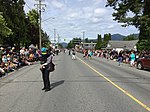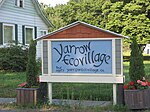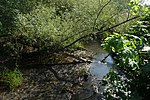Greendale, Chilliwack

Greendale is a primarily agricultural settlement within Chilliwack, British Columbia, Canada, located 92 kilometres (57 mi) east of the City of Vancouver. Greendale is located on the west side of Chilliwack, bordering the east side of the City of Abbotsford. The Vedder River forms the border between Greendale and Yarrow which lies to the South. Greendale was originally called Sumas, but got renamed in 1951 to avoid confusion with the adjoining municipality, the District of Sumas (now part of the City of Abbotsford), as well as Sumas, Washington. The area was once a 10,000 acres (4,000 ha) lake at the base of Sumas Mountain. Sumas Lake was drained in the early 1920s. Greendale has experienced two major floods, after the completed drainage, in 1894 and 1948.The Great Blue Heron Nature Reserve is located in Greendale.
Excerpt from the Wikipedia article Greendale, Chilliwack (License: CC BY-SA 3.0, Authors, Images).Greendale, Chilliwack
Underhill Drive, Chilliwack Greendale
Geographical coordinates (GPS) Address Nearby Places Show on map
Geographical coordinates (GPS)
| Latitude | Longitude |
|---|---|
| N 49.116666666667 ° | E -122.05 ° |
Address
Underhill Drive
Underhill Drive
V2R 4N6 Chilliwack, Greendale
British Columbia, Canada
Open on Google Maps




